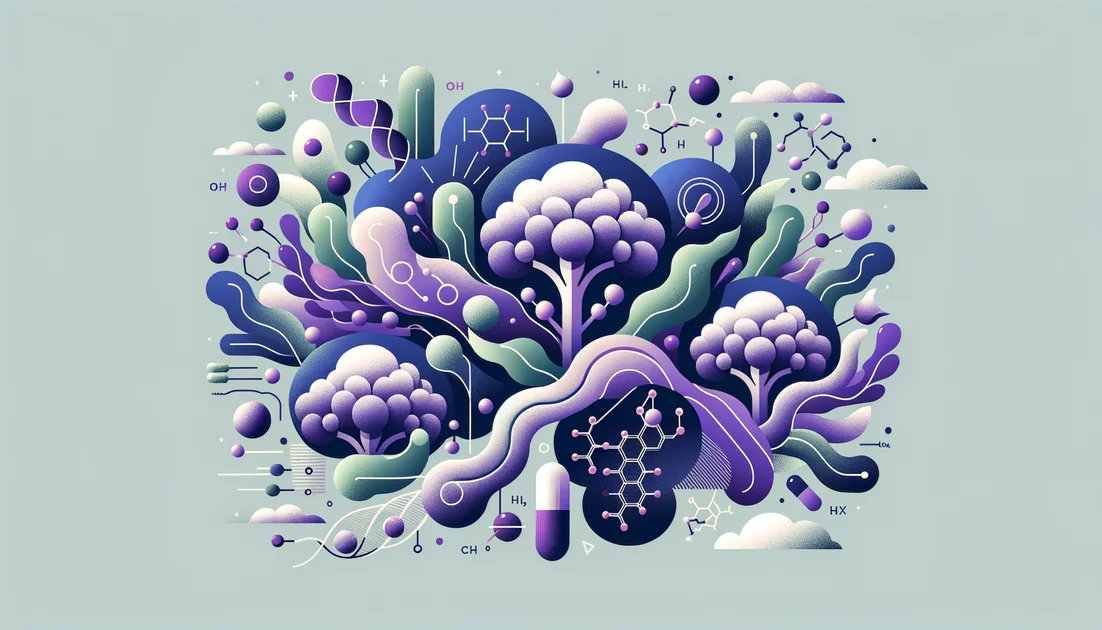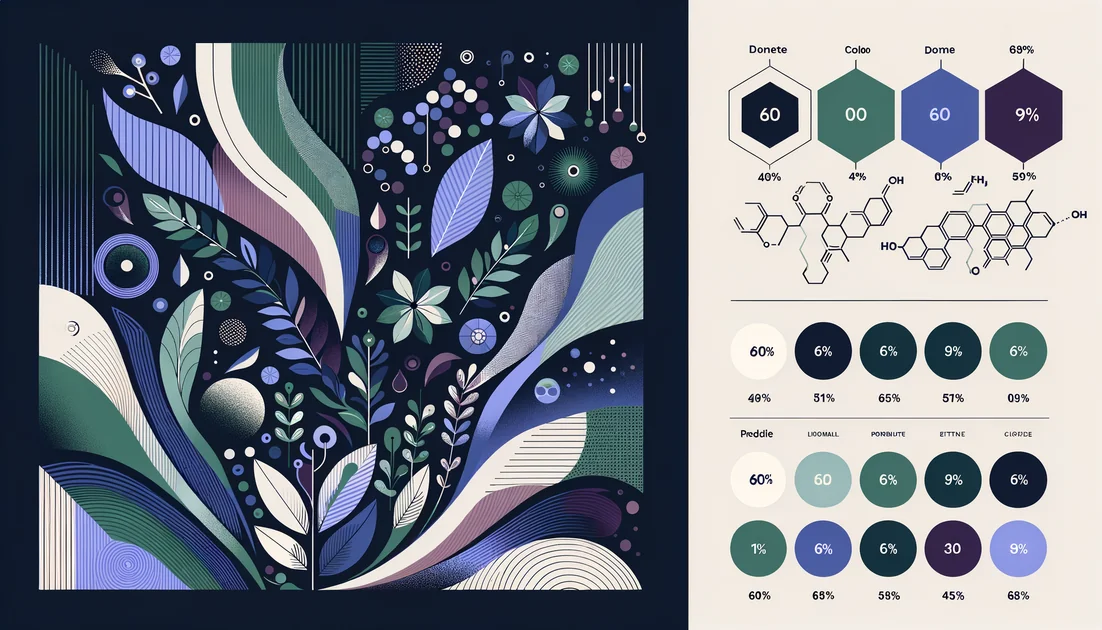
Yellow Clues, Tired Hearts, and the Mitochondrial Messenger: The Real Story of Ubiquinone
A young scientist notices a strange yellow tint in a cauliflower extract—and, by following that color, helps uncover a molecule that would one day divide cardiologists, disappoint neurologists, and quietly change a few lives.
- Evidence
- Promising
- Immediate Effect
- No → 6-12 weeks
- Wears Off
- 1–3 weeks after stopping (levels fall as half-life ~33 h)
The yellow that started it all
In 1957, a researcher at the University of Wisconsin–Madison stared at a beaker that should have been brown. Cauliflower mitochondria, unlike beef hearts, came out yellow. Frederick Crane followed that color and isolated a new molecule—coenzyme Q—soon nicknamed ubiquinone because traces of it turned up everywhere life burns fuel. He later wrote that the find was "the result of a long train of investigation," not a lucky accident. [1] If mitochondria are your cells' power plants, ubiquinone is the courier that ferries tiny packets of electrical energy between the power plant's turbines. When the courier runs smoothly, ATP—the body's energy currency—flows. When it stalls, the whole grid flickers. That idea—energy first, symptoms second—would animate decades of debate. [14]
The heart that was hungry
Half a century later, a group of cardiologists asked a simple question: if a failing heart is starved for energy, what happens if you feed its couriers? In the Q-SYMBIO trial, 420 people with chronic heart failure took 300 mg/day of ubiquinone or placebo on top of standard care. After two years, the ubiquinone group had fewer major cardiovascular events and lower all-cause mortality; symptoms improved, but only over the long haul. Short-term measures at 16 weeks didn't budge. [2] Not everyone was ready to rewrite the guidelines. Yet the trial's lead author reminded colleagues that heart failure "is a disabling disease," adding that their results showed coenzyme Q10 improved symptoms, survival, and hospitalizations. [3] Here's the practical read for you: this is not an instant-energy pill. In heart failure, any benefit appears to accumulate over months to years, the way a power grid stabilizes after long-overdue maintenance—not overnight. [2]
The statin paradox
Then came a twist. Statins block the same manufacturing line your body uses to make ubiquinone; multiple randomized trials confirm they lower circulating CoQ10. [5] Logic says: replace what statins reduce to ease muscle aches. Some meta-analyses agree—ubiquinone supplementation has been reported to lessen statin-associated muscle symptoms like pain and cramps. [7] Others, reassessing newer trials, found no significant benefit for pain or CK levels. [6] The courier metaphor helps: blood levels can be fixed, but pain has many authors. For some, the courier isn't the only problem.
Headaches, mitochondria, and a cautious green light
Migraine specialists have long suspected a mitochondrial energy dip in susceptible brains. In pooled, randomized trials, ubiquinone reduced the number of monthly attacks, though not consistently their intensity or duration. [3] U.S. neurology guidelines rate coenzyme Q10 as "possibly effective," and the American Headache Society notes research with 300 mg/day shows fewer migraines in adults. [4][17] Translation: if you're a migraineur who prefers nutraceuticals, CoQ10 is a reasonable, low-risk trial—for months, not days—alongside your clinician's plan. [3][4]
When nature needs a nudge
There is one arena where ubiquinone can be more than supportive care: rare genetic defects in the body's CoQ-making machinery. In these primary CoQ10 deficiencies, early, high-dose supplementation can slow or even reverse parts of the disease—especially in the kidney—while established neurological damage often persists. [10][11] Consider a pair of siblings with a COQ2 mutation. The older child started CoQ10 after severe damage had set in; neurologic problems remained. The younger began high-dose CoQ10 at diagnosis and saw kidney function recover, avoiding dialysis and progressing normally. Timing was everything. [11] Another vignette: a man with a COQ8A-related ataxia improved gait and symptoms after two years of ubiquinone 40 mg three times daily. These are not everyday stories—but they anchor the molecule in human lives. [20]
The Parkinson's disappointment
For years, Parkinson's researchers hoped that feeding neuronal couriers would slow degeneration. A massive phase 3 trial (QE3) tested 1,200–2,400 mg/day in early disease and halted for futility—no clinical benefit. "We are quite disappointed," the lead investigator said, "but we can't argue with the data." [8][9] The courier can't fix a power plant whose blueprints are failing.
What form, how much, and how long?
Most clinical trials—including the heart and migraine studies—used ubiquinone, not ubiquinol. Absorption varies wildly by person and by formulation; well-made oil-based softgels (either form) tend to absorb better than dry powders. Some head-to-head work finds no consistent advantage of one form over the other—what matters is getting crystals dissolved and delivered with fat. [15] Pharmacokinetically, ubiquinone peaks in blood about 6–8 hours after a dose; the average half-life is roughly 33 hours. That means steady levels take a week or two of daily use—and clinical effects, when they happen, often surface after 6–12 weeks. [16]
A note on safety and interactions
Ubiquinone has an excellent safety record in trials up to 1,200 mg/day, with occasional GI upset or mild insomnia. [12] Because its head looks a bit like vitamin K, CoQ10 may blunt the effect of warfarin; if you take warfarin, don't start without medical supervision (and extra INR checks). [13]
Where the story is going next
Scientists are mapping the CoQ "factory" gene by gene (COQ2, COQ8A, and more), and asking how the finished molecule traffics to the exact membrane that needs it. Crisper delivery and new formulations could help the right tissues at the right time. For a handful of patients with genetic defects, that future can't come fast enough. [14]
Bringing it home
If you're on statins and have muscle symptoms, CoQ10 is worth a monitored trial, with realistic expectations. [5][6][7]
If you live with migraines, 300 mg/day for at least 3 months is a reasonable, guideline-supported experiment. [3][4][17]
If you have heart failure, talk to your cardiologist; the Q-SYMBIO signal is encouraging but not yet standard of care. Benefits, if any, are long-horizon. [2][3]
The yellow tint in Crane's tube was a clue, not a cure. Ubiquinone isn't magic; it's a messenger. In the right hands—and the right stories—it still delivers. [1]
Key takeaways
- •Ubiquinone (CoQ10) ferries electrons in mitochondria, supporting ATP production—the energy-first lens explains downstream symptom changes.
- •In chronic heart failure, 300 mg/day over two years reduced major events and all-cause mortality versus placebo in trials.
- •For migraines, RCTs show fewer monthly attacks; effects on severity and duration are mixed, with 300 mg/day commonly used.
- •Statins lower circulating CoQ10; whether supplementation eases statin-associated muscle symptoms remains contested—consider a trial basis.
- •Practical use: 100–300 mg/day, taken with a fat-containing meal; expect benefits, if any, after 6–12 weeks as levels steady.
- •Cautions: coordinate with clinicians if on warfarin (monitor INR); watch for mild GI upset or insomnia at higher doses.
You might also like
Explore more of our evidence-led investigations, comparisons, and guides across every article style.

Dr. Mercola (Mercola Market / Mercola.com Health Resources)
A sustainability-forward supplement line from a polarizing figure: quality claims vs. a long controversy trail



Chlorella
In the anxious years after World War II, scientists imagined algae farms perched on skyscrapers, piping emerald paste into kitchens to end world hunger. The star ingredient was a tiny freshwater sphere named Chlorella—so efficient at turning light into food that policy makers briefly considered it a planetary rescue plan. Then came reality, and even a memorable nickname: "the gag factor."[1][16]


Tocotrienols
The stealthier cousins of vitamin E—built with springy tails that move differently in cell membranes and behave differently in your body.


